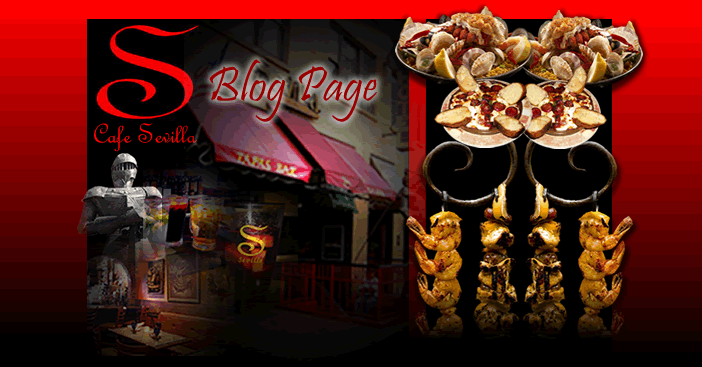 |
| Black Iberian pigs rooting for acorns. |
 |
| A Jamón Ibérico ready to slice, showing the characteristic black hoof. |
The “matanza,” or slaughter, is traditionally a family affair. The pig is slaughtered and the whole family works to preserve the meat for the rest of the year. They make chorizo, salchichón, and morcilla sausages on the spot and set aside choice cuts to be eaten fresh. Finally, the fatty legs are packed in sea salt and hung to dry in caves or special sheds in the cool winter air.
Black Iberian pigs are very fatty, with veins of fat running through their muscles. This allows the Jamones Ibérico to be cured much longer, from two to four years, resulting in a much more complex, intense flavor, with an incomparable note of sweetness. Over the curing period, the hams lose nearly half their weight as the fat drips away. Through this period of heating and cooling, salting and drying, the fats are broken down. Because of the antioxidants in the acorns and the unique curing process, the saturated fats are changed into healthy monounsaturated fats high in oleic acid. The only fat higher in oleic acid is olive oil.
The hams are named according to the pigs’ diet, with an all-acorn diet being most desirable. The finest Jamón Ibérico, cured for four years, is called Jamón Ibérico de Bellota (acorn), and is exclusively from the free-range acorn-eating pigs. Bellota Jamones are prized for their smooth texture and rich, nutty, savory taste. The lesser grades of Jamón Ibérico are called Jamón Ibérico de Recebo, from pigs that are pastured and fed a combination of acorns and grain, and Jamón Ibérico de Cebo (or simply Jamón Ibérico), from pigs fed only grain, and cured for two years. When both parents of the slaughtered animal are registered purebreds, the word “puro” can be added to the name.
Jamón Ibérico only accounts for about 8 percent of Spain’s cured-ham production; it is very expensive and not widely available abroad. Prior to 2005, it was not even available in the United States. Like Jamón Serrano and Italian prosciutto, Jamón Ibérico is served sliced very thin with good bread and very little adornment or garnish. The basic Jamón Ibérico can go for upwards of $52 a pound, and the Bellota is priced upwards of $96 a pound, making these hams some of the most expensive in the world.






